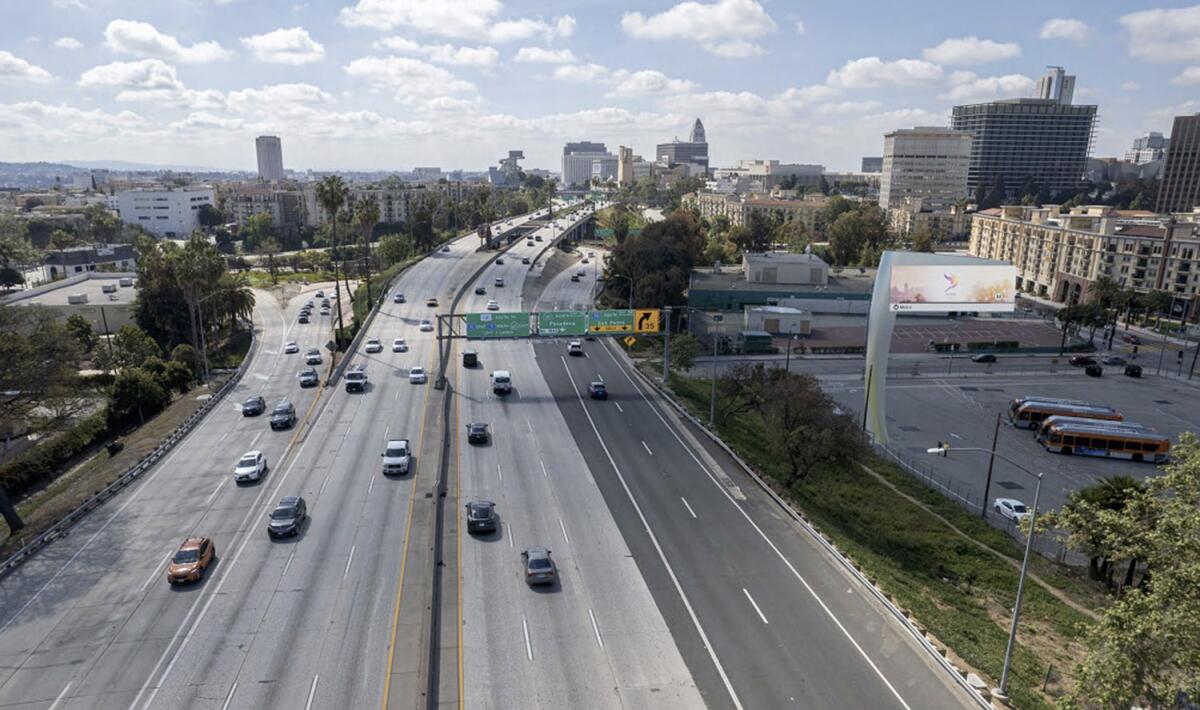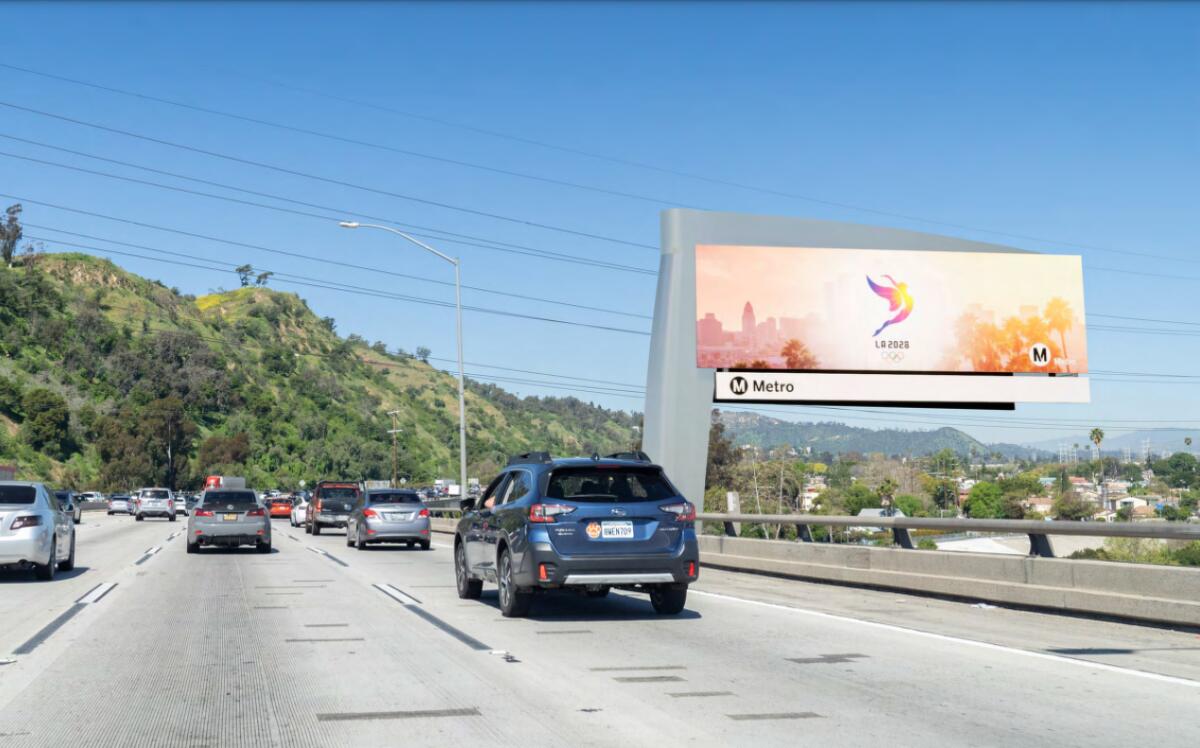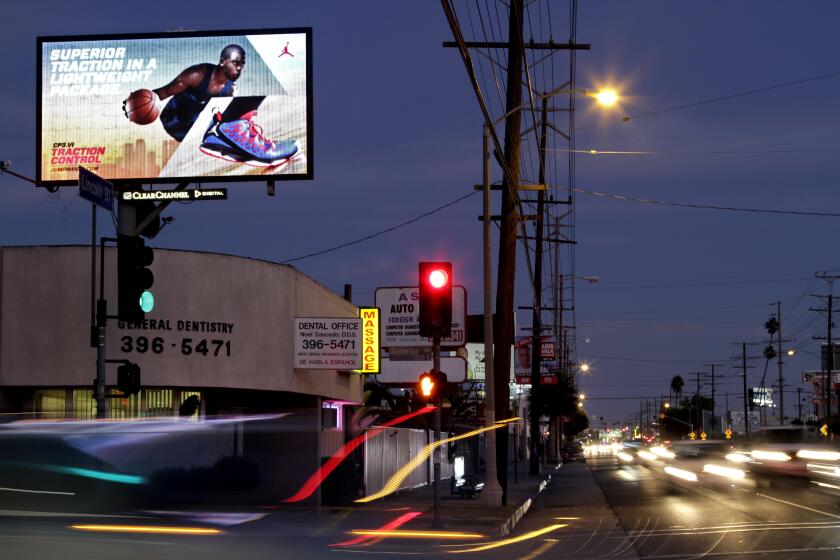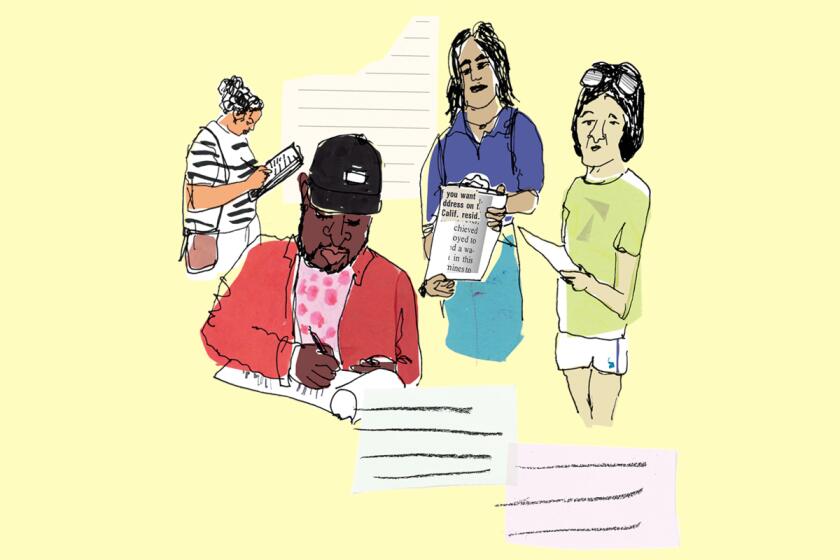L.A. planning commission backs plan for 80 digital billboards on Metro sites

Los Angeles Mayor Karen Bass’ appointees on the citywide planning commission endorsed a plan on Thursday for installing about 80 digital billboards on properties owned by Metro, the region’s transit agency.
The commission, on a 6-0 vote, backed Metro’s request for new electronic signs outside subway stations, along commercial boulevards and next to freeway interchanges across the city. Planning Commissioner Jacob Noonan praised Metro’s proposal, which could generate as much as $500 million in ad revenue over 20 years, calling it “innovative.”
“I’m not as opposed to digital billboards and signage, having worked in West Hollywood for almost 10 years and having seen what you can really do with digital billboards,” he said. “So I think this is exciting. I think that it’s an exciting and interesting way to create additional revenue sources.”
The digital sign program now heads to the City Council for review. Holly Rockwell, a senior executive officer at Metro, said she is hoping the council will take up the billboard program by the end of the year.
Metro officials said their sign program would provide a new platform for posting traffic and public safety alerts to drivers on the Westside, in the San Fernando Valley, around downtown and in other parts of the city. In addition, nearly 300 existing, non-electronic billboards — more than a third of them on Metro property — would be removed in exchange for the installation of the new digital signs, agency officials said.
Foes of Metro’s plan say the proposed digital signs — many of them 48 feet wide — will distract drivers, making the city’s streets even more perilous.
“We’re actually removing distractions from the roads,” Rockwell told the commission.
Revenue from the new digital signs would be split 50-50 between Metro and the city, with the proceeds going to pay for transportation initiatives.
Critics said the commission’s decision, if upheld by the council, would make L.A. roads less safe, allowing drivers to be distracted by images that change every eight seconds. Under Metro’s plan, seven out of every eight images would be advertising.
So far, at least 15 neighborhood councils have come out against Metro’s plan, with many saying the new signs would create visual blight.
Patrick Frank, president of Scenic Los Angeles, said Angelenos have repeatedly shown their support for Metro, by approving a series of sales tax increases in recent decades that help pay for the agency’s operations. The most recent was Measure M, the half-cent sales tax hike that was approved in 2016.
“I want Metro to be fully funded,” he said. “But there’s a way to do it without degrading our visual environment.”
Metro’s proposal calls for digital billboards to go up at or near such landmarks as Union Station, Pershing Square, Universal Studios and Los Angeles International Airport. About eight of the new signs, or one-tenth of the total, would be located within the Boyle Heights community plan, according to the commission’s report.
A lawyer for Metro dismissed the safety warnings from critics, saying state and federal agencies have not found a link between electronic signs and traffic collisions. Still, some on the commission did not sound entirely reassured.

Commissioner Ilissa Gold said she remains “deeply skeptical” about the safety issues created by digital signs. Commission President Samantha Millman called digital billboards “a touchy issue,” saying the panel is “experimenting with something that has not been done before in the city.”
Millman said she was reassured, in part, by the fact that each sign will have louvers, which will limit the amount of light spillover.
The commission turned down Metro’s request to have its digital signs operate until 2 a.m., recommending instead that they be turned off at midnight. The panel also removed six digital billboards from the overall plan, at the recommendation of city planning officials.
Two of those were planned near Union Station in downtown, while four others were slated to go up near the 2 Freeway, not far from a site known as the “bowtie parcel,” which is slated to become public parkland.
Metro’s sign proposal is backed by Bass and council President Paul Krekorian, who serve on Metro’s 13-member board, which signed off on the environmental review for the billboard initiative earlier this year.
Your elected representatives work for you – from the mayor to the county supervisors to state legislators to the governor. Use Shape Your L.A. to get in touch.
The digital billboard plan also has drawn support from construction trade unions, particularly those that represent ironworkers and electrical workers. Representatives of those groups said the electronic signs would create jobs and provide motorists important public safety messages, such as Amber alerts about missing children.
Others at the meeting said the advertising revenue would help Metro pay for additional safety measures on its buses and trains, such as the unarmed ambassador program.
Opponents of the sign plan said they have already begun contacting their council members. Councilmember Hugo Soto-Martínez, who represents much of Hollywood, has asked for more information about Metro’s plan for digital signs outside two subway stations on Vermont Avenue — one at Santa Monica Boulevard, the other at Beverly Boulevard.
An aide to Councilmember Traci Park, who represents part of the Westside, said her boss is worried about the creation of visual blight in her district, which stretches from LAX north to Pacific Palisades, and the possibility of distracted drivers. The council member also believes there has not been enough community outreach, said Jamie Paige, a spokesperson for Park.
More to Read
Sign up for Essential California
The most important California stories and recommendations in your inbox every morning.
You may occasionally receive promotional content from the Los Angeles Times.













